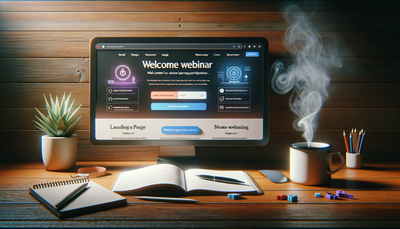Creating Personalized Landing Pages: The Key to Higher Conversions
In the digital marketing landscape, personalized landing pages have emerged as a powerful tool for boosting conversion rates. By tailoring content to individual visitors, businesses can create more engaging and relevant experiences that resonate with their target audience. This article delves into the world of personalized landing pages, exploring various techniques and strategies to implement effective personalization. We'll cover dynamic content generation, segmentation strategies, and the use of personalization tools to help you create landing pages that speak directly to your visitors' needs and preferences. By the end of this guide, you'll have a comprehensive understanding of how to leverage personalization to increase conversions and drive business growth.Table of Contents:

Understanding the Importance of Personalized Landing Pages
Personalized landing pages are designed to deliver tailored content to specific segments of your audience, increasing relevance and improving user experience. By presenting visitors with information that aligns with their interests, demographics, or behavior, you can significantly boost engagement and conversion rates. Studies have shown that personalized experiences can lead to a 20% increase in sales on average.The key to successful personalization lies in understanding your audience and leveraging data to create meaningful, targeted experiences. By implementing personalization techniques, you can guide visitors through a more relevant customer journey, ultimately increasing the likelihood of conversion and fostering long-term customer relationships.
Do you need a website? Want to build a website but don't know where to start? Our website builder is the perfect solution. Easy to use, and with the ability to customize to fit your business needs, you can have a professional website in no time.
Implementing Dynamic Content for Personalization
Dynamic content is a crucial component of personalized landing pages. It allows you to display different content to different visitors based on various factors such as their location, browsing history, or previous interactions with your website. By leveraging dynamic content, you can create a more personalized experience that resonates with each visitor.To implement dynamic content, start by identifying key variables that influence your visitors' behavior and preferences. This could include factors like geographic location, device type, or referral source. Next, create content variations that cater to these different segments. For example, you might display different hero images or calls-to-action based on a visitor's industry or job role. Use your website's content management system or a dedicated personalization tool to set up rules for displaying the appropriate content to each visitor.
Segmentation Strategies for Effective Personalization
Segmentation is the foundation of successful personalization. By dividing your audience into distinct groups based on shared characteristics, you can create more targeted and relevant experiences. There are several approaches to segmentation, including demographic, behavioral, and psychographic segmentation.Demographic segmentation involves grouping visitors based on factors like age, gender, income, or location. Behavioral segmentation focuses on how visitors interact with your website, such as their browsing history or purchase behavior. Psychographic segmentation considers visitors' interests, values, and lifestyle choices.
To implement effective segmentation, start by analyzing your existing customer data and website analytics. Identify patterns and commonalities among your most valuable customers. Use this information to create distinct audience segments and develop personalized content strategies for each group. Regularly review and refine your segments to ensure they remain relevant and effective.
Building a website with SITE123 is easy
Leveraging Personalization Tools and Technologies
To streamline the process of creating personalized landing pages, numerous tools and technologies are available. These solutions can help you gather and analyze visitor data, create dynamic content, and implement personalization rules across your website. Some popular features to look for in personalization tools include:1. Real-time visitor profiling
2. A/B testing capabilities
3. Machine learning algorithms for content recommendations
4. Integration with your existing CRM and marketing automation platforms
5. Analytics and reporting features
When selecting a personalization tool, consider factors such as ease of use, scalability, and compatibility with your existing tech stack. Look for solutions that offer robust documentation and customer support to ensure a smooth implementation process.
Best Practices for Personalized Landing Pages
To maximize the effectiveness of your personalized landing pages, keep these best practices in mind:1. Start with a solid understanding of your audience and their needs
2. Use clear and compelling calls-to-action tailored to each segment
3. Ensure your personalization efforts align with your overall brand messaging
4. Continuously test and optimize your personalized content
5. Respect user privacy and comply with data protection regulations
6. Maintain a balance between personalization and user choice
7. Use social proof and testimonials relevant to each segment
8. Optimize page load times to maintain a smooth user experience
By following these guidelines, you can create personalized landing pages that not only drive conversions but also build trust and loyalty among your audience.





